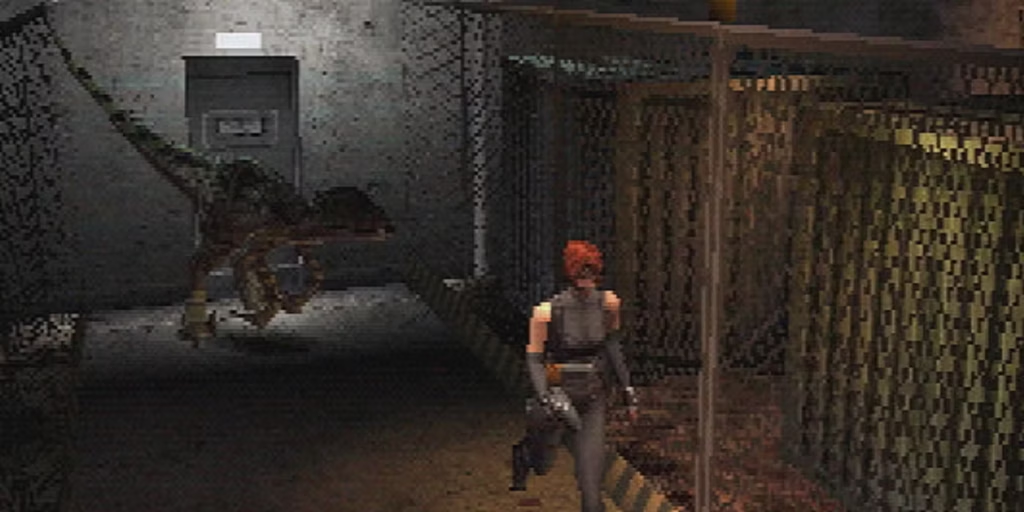
Dino Crisis is a survival horror game developed and published by Capcom, released for the PlayStation in 1999 and later ported to Dreamcast, PC, and other platforms. Directed by Shinji Mikami (the creator of Resident Evil), the game replaces zombies with dinosaurs in a high-stakes setting that mixes action, puzzles, and horror. Players step into the role of Regina, a special agent investigating a mysterious island research facility where dinosaurs have been brought back to life.






While responding to an emergency involving Dr. Edward Kirk, a scientist presumed dead, Regina and her team arrive at the facility. Instead of hostile humans or bioweapons, they are confronted by resurrected dinosaurs that now roam freely. The game combines corporate conspiracy, cutting-edge (for the time) technology, and prehistoric horror, offering a unique twist on the survival horror formula.
Gameplay
- Core Mechanics: Similar to Resident Evil, with fixed camera angles (later versions introduced dynamic angles) and inventory-based resource management.
- Combat: Real-time combat against dinosaurs, which are faster and deadlier than zombies, forcing players to constantly adapt strategies.
- Resources: Ammo and health are limited; tranquilizers can subdue dinosaurs temporarily.
- Puzzles: Complex environmental and key-based puzzles are integral to progress.
- Branching Choices: At key points, Regina can choose different paths, leading to multiple endings adding replayability.
Visuals and Style




- Graphics: Utilizes fully 3D environments (unlike Resident Evil’s pre-rendered backgrounds), which gave it a more dynamic and cinematic presentation.
- Design: Sleek military sci-fi aesthetics blended with stark industrial labs and jungle-like dinosaur enclosures.
- Atmosphere: Emphasizes tension through sound design distant dinosaur roars often serve as a warning before encounters.
Importance in Survival Horror History
- Represented Capcom’s bold experimentation with the survival horror formula at the height of Resident Evil’s popularity.
- Showed how the genre could evolve beyond zombies, tapping into primal fears (being hunted).
- Its real-time 3D environments influenced later horror titles.
- Paved the way for Dino Crisis 2 (2000), which leaned more into action, and left a cult following demanding a revival to this day.
Reception vs Historical Value
- Reception (1999): Generally positive, praised for innovation, atmosphere, and tension, though criticized for clunky controls and uneven pacing.
- Historical Value: Today it is regarded as a cult classic, admired for taking survival horror into uncharted territory. Despite not becoming as mainstream as Resident Evil, it remains a landmark experiment in the genre.
Availability and Collectibility

- Physical Copies: The original PS1 version is highly collectible; complete boxed versions often sell for $50–$150+ depending on condition.
- Ports: Dreamcast and PC versions are rarer and more expensive.
- Considered a valuable collector’s item, especially sealed or first-print editions.
- The franchise’s dormant status (no modern remakes yet, despite high demand) boosts its retro appeal and resale value.
Play It Now
- eBay Listings: Physical copies for PS1, Dreamcast, or PC are the primary way to play.
- Also Available through GOG (Click Here)
- Also Available on the PSN since November 2024 ( PlayStation Network)
Trailer :
